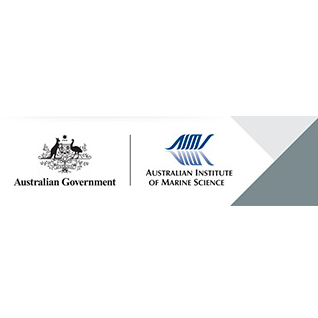Full description
Corals of the World online is an interactive program, which captures global information about corals and makes it readily accessible to conservationists, educators and research scientists alike. The program is divided into two linked components, Coral ID and Coral Geographic.Coral ID is founded on the three-volume book, "Corals of the World" (Veron, 2000) and incorporates updated and expanded species data from the electronic publication "Coral ID" (Veron and Stafford-Smith, 2002). The sophisticated electronic key in this program makes coral identification easy. Species pages give summaries of key characteristics as well as taxonomic detail.
The Coral ID program includes:
1. A sophisticated (Lucid-based) key taking users directly to species pages. (coming soon)
2. Species pages containing:
-A character summary
-Underwater in situ photographs
-Photographs of skeletons
-Data on colour, similar species, habitats and abundance
-Detailed account of skeletal and live coral characteristics (coming soon)
-A map showing global distribution from Coral Geographic
-Reference information
-Links to other identification products
3. A link to Coral Geographic.
Coral Geographic has not been previously published although it has been providing geographic data about corals since the early 1990s. Geographic information can be obtained in a many formats allowing analyses and interfacing with other programs and datasets. The program divides the world's coral regions into 141 named ecoregions. Features of Coral Geographic will be released progressively over the next few years and will be available (a) interactively on the internet, (b) for downloading in available formats and (c) on DVD.
The Coral Geographic program includes:
1. For each coral species:
-A GIS map showing global distribution
-Types of presence/absence records available
-Comprehensive references
-A link to the relevant species page in Coral ID
2. For each ecoregion:
-A comprehensive list of species
-Geographic information and photographs
-Links to other information sources
3. Multiple species maps which can be selected according to user needs.
4. Species maps which can be interfaced with other programs according to user needs.
Additional information is available in the form of explanatory chapters about coral classification, coral structure and growth, coral taxonomy, coral environments, reefs, mass bleaching, coral reproduction and coral evolution.
Also, a space where users can insert information for personal use and a link where information and photographs can be submitted for inclusion in program updates is included. (coming soon)
This program has been developed to provide global information about corals to conservationists, educators and research scientists alike.
Early taxonomic classifications were published by J.E.N Veron and Michael Pichon in 'Scleractinia of Eastern Australia' Monograph Series, Vol I-V. These publications have been digitised by Atlas of Living Australia, and made available on the Ocean Biogeographic Information System.
Lineage
Maintenance and Update Frequency: asNeededNotes
CreditVeron, JEN (Charlie), Dr (Principal Investigator)
Modified: 22 08 2025
text: westlimit=-152.0; southlimit=-29.5; eastlimit=-121.0; northlimit=-4.0
text: westlimit=-152.0; southlimit=-40.0; eastlimit=90.0; northlimit=36.0
text: westlimit=67.0; southlimit=-9.0; eastlimit=83.0; northlimit=24.0
text: westlimit=90.0; southlimit=-40.0; eastlimit=180.0; northlimit=36.0
text: westlimit=-180.0; southlimit=-40.0; eastlimit=-152.0; northlimit=36.0
text: westlimit=-110.5; southlimit=-28.3; eastlimit=-107.9; northlimit=-26.3
text: westlimit=26.0; southlimit=-35.0; eastlimit=64.7; northlimit=31.0
text: westlimit=-20.0; southlimit=26.0; eastlimit=-11.0; northlimit=34.0
text: westlimit=-26.5; southlimit=-6.0; eastlimit=10.0; northlimit=20.0
text: westlimit=-45.0; southlimit=-19.0; eastlimit=-31.0; northlimit=0.0
text: westlimit=-112.0; southlimit=-2.0; eastlimit=-58.0; northlimit=34.0
text: westlimit=-6.0; southlimit=30.0; eastlimit=36.0; northlimit=46.0
User Contributed Tags
https://www.ebay.com.au/itm/305888878741?mkcid=16&mkevt=1&mkrid=705-154756-20017-0&ssspo=xrgz1gbprm6&sssrc=4429486&ssuid=xrgz1gbprm6&var=&widget_ver=artemis&media=COPYLogin to tag this record with meaningful keywords to make it easier to discover
Veron JEN and Pichon M (1980) Scleractinia of eastern Australia. Part III : Families Agariciidae, Siderastreidae, Fungiidae, Oculinidae, Merulinudae, Mussidae, Pectiniidae, Caryophylliidae, Dendrophylliidae. Australian Institute of Marine Science & Australian National University Press.
local : 11068/1940
Veron JEN and Pichon M (1982) Scleractinia of eastern Australia. Part IV : Family Poritidae. Australian Institute of Marine Science & Australian National University Press.
local : 11068/1941
Coral ID (first release 2002): Veron JEN and Stafford-Smith MG (2002) Coral ID (first release 2002). Australian Institute of Marine Science. CD-Rom.
local : articleId=6389
Veron JEN and Pichon M (1976) Scleractinia of eastern Australia. Part I : Families Thamnasteriidae, Astrocoeniidae, Pocilloporidae. Australian Government Publishing Service. 208 p
local : 11068/1937
Coral Eco Regions (coralid:ecoregion1)
uri :
https://maps.aims.gov.au/geoserver/coralid/wms![]()
OBIS: Scleractinia of Eastern Australia - AIMS Monograph Series - John (Charlie) Veron
uri :
https://obis.org/dataset/217bc2a9-4d9a-4064-bab4-457121c68145![]()
Veron JEN and Wallace CC (1984) Scleractinia of eastern Australia. Part V. Family Acroporidae. Australian Institute of Marine Science & Australian National University Press.
local : 11068/2145
Veron JEN, Pichon M and Wijsman-Best M (1977) Scleractinia of eastern Australia. Part II : Families Faviidae, Trachyphlliidae. Australian Government Publishing Service. 231 p.
local : 11068/1939
External link: Corals of the world online
- global : c4444880-4227-448a-9f47-999bf2ffebe7


